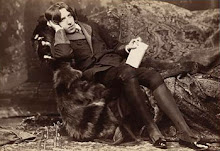Indeed, as we've seen, there is a wide influence of the myth of Dracula, and dance doesn't make exception.
Below you can see some recorded perfomance of the well known balet companies.
A Greek ballet on Dracula by Dimitri Papaioannou, chief choreographer of the Athens 2004 Olympics (click here for a 10minute dansing Greek history timeline). Forceful and full of symbolic meanings, it invites you to see things “between the lines”, into the deeper realm of the shadows of the human soul.Dracula, as danse itself is universal. Από τις πιο δυνατές παραστάσεις του Δράκουλα, το ομώνυμο μπαλέτο του Δημήτρη Παπαϊωάννου, γνωστού από τις τελετές του Αθήνα 2004, καλεί το θεατή να διαβάσει ανάμεσα στις γραμμές, τις κινήσεις και τους συμβολισμούς της χορογραφίας, και να καταδυθεί στα σκοτάδια της ανθρώπινης ψυχής. Ο χορός, όπως ο ήρωας του Στόκερ, έχουν διαμεθοριακή και διαχρονική ισχύ.

















1 comment:
In the last time all over the world many shows and ballets related to Dracula's profile have been directed, especially with political meaning. One of these has been seen during the campaign for American president - Here is the related article: http://www.nytimes.com/2008/10/02/arts/dance/02ball.html?_r=1&partner=rssnyt&emc=rss&oref=slogin
Post a Comment